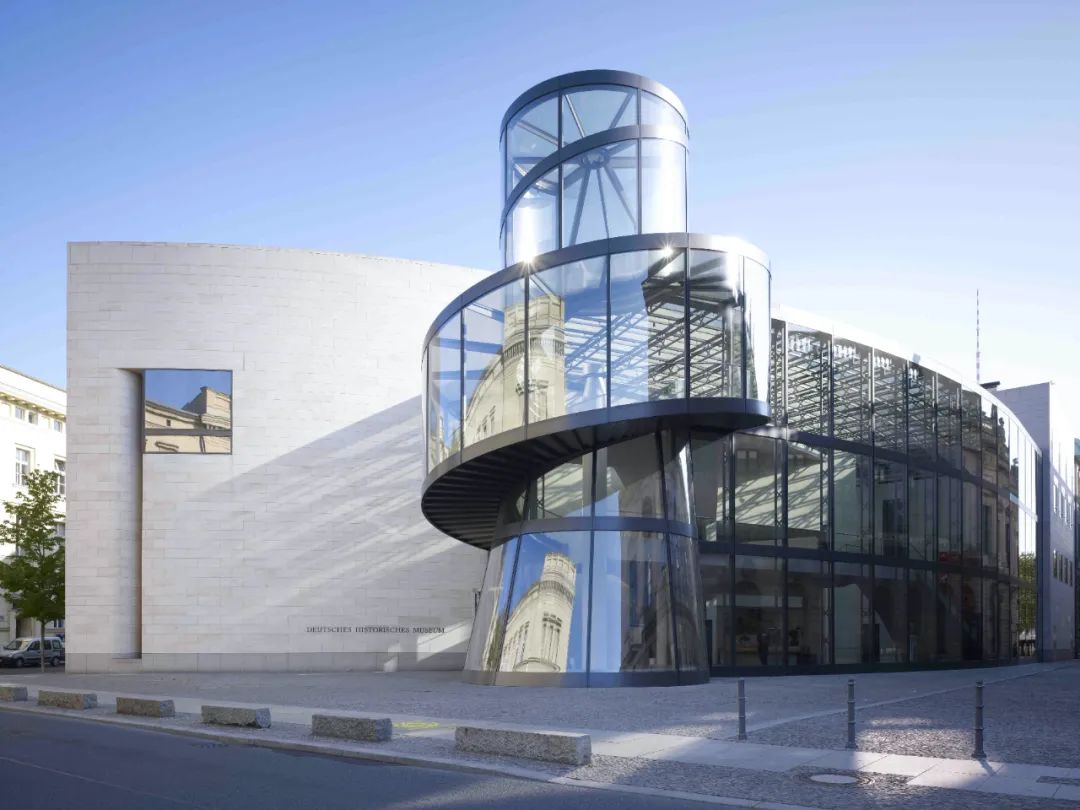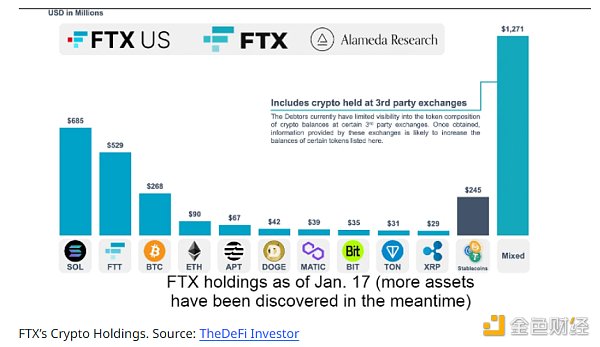Want to get a strategic investment in a public-chain eco-fund, what do developers need to know?
Chain Weng once published the article “I understand the ecological construction methods and difficulties of blockchain developers”, and listed how the blockchain agreement should attract and retain developers, and provide financial investment to provide strategic investment. ecosystem. However, the efforts to fund the blockchain ecosystem are like a mess, but fortunately, this article and a full list of eco-funds pushed today will help you.
In today's encryption world, the theme of Ecosystem financing is becoming more and more important, for the following reasons:
1. The number of encrypted funds and total assets under management are rapidly declining with the price of encrypted assets;
2. As the need for wealth management becomes more prominent, it is increasingly important to find the most efficient way to allocate funds;
3. Perhaps most importantly, a new generation of Layer 1 smart contract platforms is being rolled out, and competition for high-quality developers and their applications is growing.
- It’s faster than expected! Why is Facebook eager to launch stable coins?
- Trump has a finger, how will the currency market go?
- Blockchain changer, UPE resonance starts strong
Ecosystem financing is strategic in nature and provides an important complement to the simple financial investment of venture capital funds. Blockchain agreements hope to attract development talent and build an active and exclusive user base, but there are not many methods that they can use, and funding or strategic investment for developers is an important method that can be used.
Although ecosystem finance is significant to the blockchain industry, there are currently few studies in this area. As in other areas of the encryption world, important information about blockchain ecosystem financing is scattered across hundreds of Medium posts, Github codebases, Twitter feeds, news releases, foundations/fund sites, and often Confusing, timeliness is a problem, and information is often contradictory.
So, I decided to write and publish this “Panel Chain Ecosystem Financing Panorama”, hoping to give blockchain developers and projects a one-stop source of information that will help them discover new sources of funding and thus be important projects. Financing.
Why is ecosystem financing so important?
Encrypted fund fluctuations
In 2017 and 2018, the number of encrypted investment funds in the blockchain industry surged. However, with the collapse of crypto assets prices in 2018, a large number of funds have withdrawn; more funds are expected to close in 2019. Many funds have reported very bad performance, which makes it difficult for their partners to make large losses, and it is even more difficult to obtain performance rewards. I believe that the LPs of these funds are very disappointed with the proceeds and will start redeeming funds.
According to Vision Hill Research, as of the fourth quarter of 2018, the number of known encrypted investment funds has exceeded 425, with total asset management of approximately $4.5 billion, a decrease of approximately 25% from $6 billion in the second quarter of 2018. At the same time, Vision Hill estimates that the top 20 funds have more than 53% of the total assets under management, which means that the remaining 405 funds have an average of about $5 million per managed asset.
Ecosystem financing is a governance issue
Decentralized Transaction Agreement 0x recently proposed a proposal to increase liquidity based on the stake. In the future, the token ZRX in the system may adopt the economic incentive of PoS consensus. The proposal focuses on “sustainability” and hopes to motivate the 0x developer community through investment. The ZEIP-31 proposal proposes to return part of the 0x transaction fee to the asset account of the 0x community, and the holder of the ZRX token obtains control and distribution rights for the asset account. The spirit of this proposal is very similar to the newly created Moloch Dao. Moloch Dao is a recently created new project on community governance designed to provide equitable funding for Ethereum developers.
If it's not possible to give developers financial support, these blockchain agreements will face the same problem as Grin: core developers have a tough financial situation and rely on donations to maintain operations. In the long run, is this model sustainable? For blockchain protocols, it is important to identify the right governance model to motivate future core developers.
Both Decred and Stellar are working hard to determine how to fund developers through the community.
Competition and application of intelligent contract platform
At present, the competition between the existing smart contract platform such as Ethereum and the upcoming platform such as Polkadot has become increasingly fierce. The members of the two communities are on the turret, and tribalism seems to be at the highest point in history.
The decentralized application has not yet reached a large scale and is caused by many reasons. For beginners, the existing Web3 infrastructure is not sufficient for high-throughput applications. At the same time, key development tools and Layer 2 expansion solutions are still in preparation and are not yet ready.
The superior technology may not be enough to win the battle of this smart contract platform, so each team is using all the tools they have to get the developer's attention, including the allocation of funds through the foundation and the ecological fund, for development By. If you win the hearts of developers, it may have a positive impact on the development of future core agreements.
Now, the initial influx of Layer 1 funds is flowing back to the application layer, which is critical to driving users to use these smart contract platforms.
Ethereum's leading edge
According to a recent developer report published by Electric Capital, Ethereum maintains a leading edge in terms of developer activity over other smart contract platforms, with more than twice as many core developers per month as the second-ranked Bitcoin. Many people believe that this is because Ethereum has a first-mover advantage and enjoys the network effect created by the existing developer community.
However, the recent launch of Cosmos and upcoming platforms such as Polkadot may change this. The recent skirmishes in the Ethereum developer community are a perfect example of this. The Aragon team proposed in early April that the Ethereum Foundation should fund Aragon DAO, but the problem is that the team is also trying to launch Aragon Chain on Polkadot.
In addition, many people underestimate the impact of ConsenSys on the development of the Ethereum community. Don't forget, in the past two years, ConsenSys has invested hundreds of millions of dollars in dozens of startups and developers.
However, ConsenSys has recently encountered challenges and has cut a lot of employees. These developers are looking for new homes and smart contract platforms that open their arms to them.
Of course, Ethereum should not be underestimated. ConsenSys has been providing funding to developers, recently announced the second phase of the accelerator program Tachyon, and the Ethereum Foundation has been funding accordingly. In the fourth round of funding last October, there were 20 More than $2 million was invested in the team.
What is the overall status of ecosystem financing?
Developer activity is growing and is now approaching the highest levels of history, but in addition to being a speculative asset, it seems that it will take years for blockchain projects to be applied to reality. The long road of application landing will bring many opportunities for developers and entrepreneurs to find the shortcomings of existing ecosystems and build solutions.
Despite this, in the long-term bear market, many reliable teams have to struggle hard to find funding sources in the context of shrinking asset management of encryption funds.
The ecosystem financing scheme seems to be a viable path. There are many capital-rich blockchain agreements that are deploying eco-investment funds, providing funding and investment to build their own ecosystems in a highly competitive environment.
Ecosystem financing is mainly divided into two forms:
1. Dilutive capital: Includes venture capital and accelerator programs. Investors will own the ownership of an entity and invest in profit-making.
2. Non-dilution capital: Foundations and grants that include blockchain agreements. The sponsor has no ownership of the grantee and no profit expectations, but there are other goals for the sponsor to take the money out.
However, the information about these financing projects is decentralized and often contradictory, posing a challenge to entrepreneurs.
What kind of confusion can be seen from the case of EOS.VC?
EOS.VC is one of the largest ecosystem development funds. After the creation of EOS.io, Block.one announced a partnership with five external venture capital firms in early 2018 for EOS-related infrastructure and decentralized applications. Invested $725 million.
With such a strong capital, EOS is able to generate significant market share from Ethereum by providing significant investments in projects based on its agreements. For example, recently EOS partner Galaxy Digital led the group chain game company Mythical Games for $15 million.
However, from an entrepreneur's perspective, EOS.VC's investment strategy is confusing. In fact, this is true in the entire ecosystem financing arena. First of all, the true person in charge of these funds is not clear. In July 2018, after Block.one announced the establishment of an eco-fund with five independent partners, the company hired Michael Alexander as CEO of EOS.VC.
With multiple funds and little or no transparency in decision making, it is difficult for external teams to anticipate things. For example, Galaxy Digital is one of EOS.VC's partner funds, and Galaxy Digital also makes a lot of direct investment. If an entrepreneur is negotiating an investment with Galaxy Digital, does his/her project need to be established on EOS? The answer is not clear.
In addition, various information is always changing. For example, EOS.VC announced a partnership with Tomorrow Blockchain in January 2018; however, if you search for "partners" on the EOS.VC website, TomorrowBC is not available, and the other four partner funds still exist. So far, there have been no published announcements indicating significant changes in EOS.VC's partnership.
In addition, many insiders doubt whether it is enough to invest only. Teams like Block.one also need to attract developers through other community building activities, marketing, hacking, and social trends. This is the difficulty for EOS, as the development activities of the EOS core protocol have been reduced since the EOS main online line.
What are the risks of binding a certain protocol?
Another example that should be taken care of is the RChain protocol and its ecosystem development fund, Reflective Ventures.
The Reflective Ventures website shows that the fund has invested $21 million in 21 companies interested in building on the RChain blockchain. Since then, however, Reflective has become a cross-protocol investor and has been renamed Counterpointe Ventures.
The website of Reflective Ventures does not state what the investment structure or investment currency of Reflective is. As the media reported in December 2018, the RChain agreement is now "functionally bankrupt." The development of the agreement almost stopped, and the price of the original token RHOC plummeted more than 95% from the highest point in history. Given that liquidity is almost zero, it has essentially become a bot.
If Reflective invests in these companies is RHOC, these portfolio companies are not immediately sold RHOC tokens, but are locked, then these investments may even be in trouble.
It is worth noting that ecosystem financing is a strategic capital that establishes a stakeholder relationship between the funding team and the original agreement, and the recipient of the funding and investment bears the risk of failure of the underlying agreement.
What questions should developers and project founders ask?
If you are a developer or a founder of a funded project and are currently seeking funding from an ecosystem fund or foundation, be sure to ask the right questions. The following questions are not exhaustive, but can serve as a good starting point.
- Is this a dilute capital investment with profit expectations or a non-dilution grant?
- After getting your investment, do I have to develop only on your blockchain agreement, or can I develop across protocols?
- If the above answer is that I have to bind a certain kind of agreement, then am I willing to take on additional platform risks?
- Will I lose the intellectual property rights of my own development products?
- Is it using native currency, legal currency, stable currency, ETH, or bitcoin to invest?
- Is there a lock-up period for investment funds?
- Is there technical support to help develop the integration agreement?
- Is the financing tied to the important nodes of the project?
- Will you continue to invest in the future?
- What other value-added services can I offer?
What other discoveries?
We have recently conducted a systematic study that found that 28 blockchain protocols can provide one or more ecosystem financing.
Among them are 25 venture capital funds and accelerators, which manage more than $1.6 billion in funding and have so far funded more than 100 companies.
In addition, there are 20 foundations and various funded projects that manage more than $350 million in assets and have funded dozens of developer teams and companies.
Although nearly $2 billion in total asset management may be exaggerated, it represents 44% of Vision Hill's estimated fourth quarter encrypted hedge fund asset management. Many funds are likely to be launched before the collapse of the encryption price from the end of 2017 to the beginning of 2018, so the actual asset management is likely to be less than the value listed here, but even so, ecosystem financing should not be ignored!
To help developers get these eco-funds, the early project investment agencies I worked on sorted the information and produced a table that included all of these venture capital funds, accelerators, foundation-funded projects, and more. Contains information on investment strategies, investment priorities and contacts from different organizations. I hope this information will help developers get the money and resources they really need.
Written by: Marc Weinstein, working for early project investment firm Wave Financial
Compile: Cheng Ziying
Source: Chain smell chainnews
We will continue to update Blocking; if you have any questions or suggestions, please contact us!
Was this article helpful?
93 out of 132 found this helpful
Related articles
- Find this bus! The Wenkleworth brothers launched the 1 BTC challenge
- Zhu Yan, a professor at Tsinghua SEM, blockchain technology can contribute to global governance
- Blockchain Weekly | Bitcoin hit a new high in the year, up to more than $6,000
- False certificate helped Wu Xieyu escape three years behind: ID card lost 99% was bought and sold, the Ministry of Public Security blockchain technology is on the road
- Half a year in the year, soaring! Will the history of Bitcoin's 7-year history reappear?
- Those things in Tether (USDT)
- Babbitt's exclusive review of 98 new three-board company annual reports, found that the company layout blockchain 6 features






